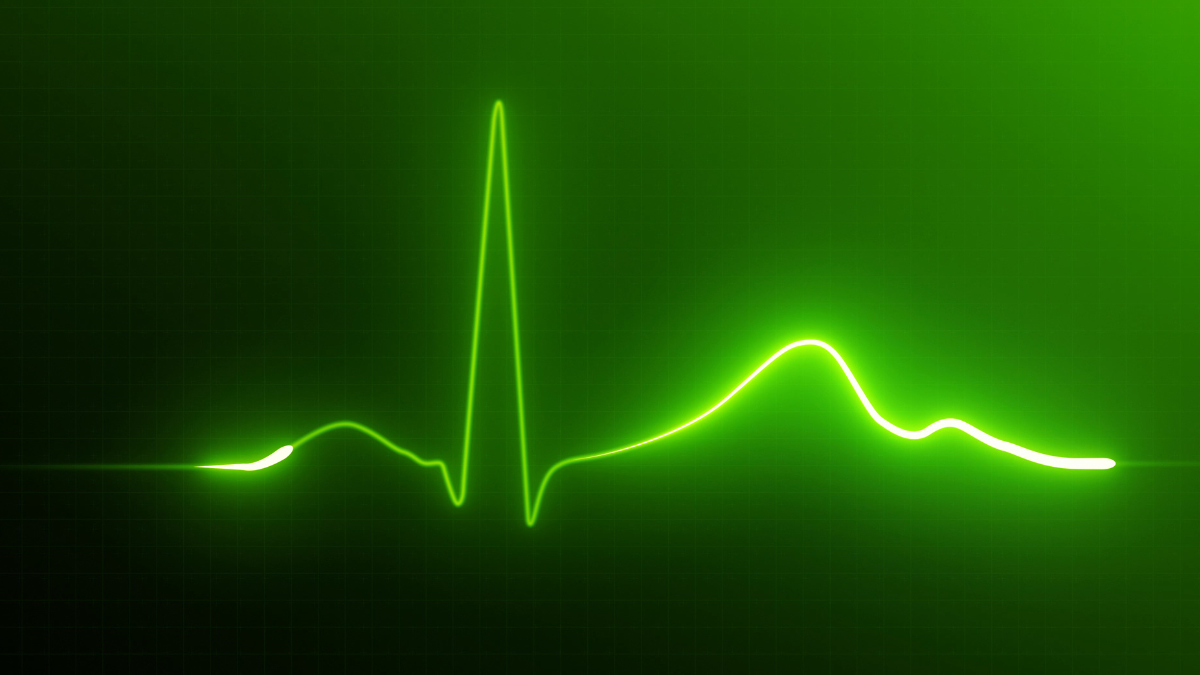What is Heart Rate Variability (HRV)?
Heart Rate Variability is the time taken between each heart rate. The period is measured between the peaks of the beat (see image).The time variation between each beat is controlled by the Autonomic Nervous System (ANS), which regulates several things in the body, such as heart rate, blood pressure and digestion. The ANS is divided into two components, the sympathetic and parasympathetic systems.The sympathetic nervous system activates the ‘fight or flight’ response, effectively decreasing Heart Rate Variability intervals, increasing your heart rate and blood pressure.While the parasympathetic system returns the body to a state of calm, increasing the variance of intervals.Interestingly, the ANS does control how frequent your heart beats, but it’s the Sinoatrial node which determines your heart’s actual rhythm.

How can it be measured?
Traditionally Heart Rate Variability is something that could only really be measured via a Electrocardiogram (ECG) device. These devices sense the electrical pulsing from the heart contraction, where they monitor the variances in heart beats. Traditionally very cumbersome and complex to use, advancements in technology have resulted in new devices [wearables] being able to monitor Heart Rate Variability, leading to greater affordability and accessibility. Now we can measure HRV with only your smartphone camera, making it possible for nearly everyone to gain crucial insights in their cardiovascular health, without purchasing more hardware. Vastmindz measures heart rate by monitoring how light illuminates pulsing blood flow in the face, providing data for our algorithms to calculate Heart Rate Variability. A massive benefit of this technology is that no bodily contact is required.
What does it indicate?
Heart Rate Variability is a crucial indicator of an individual’s cardiovascular health. A higher HRV is a sign of better health as your heart has fewer beats per minute, a common sign of good fitness. HRV can also be used to detect Atrial Fibrillation in people.Atrial Fibrillation is when the heart beats irregularly and abnormally fast. It’s imperative that ‘Afib’ is identified as soon as possible, HRV tracking makes this far more likely.
It’s also a key indication tool to understand blood pressure non-invasively. For example,individuals with a low HRV are more likely to suffer from diabetes or Hypertension (high blood pressure).Changes in blood pressure affect our autonomic tone [and vice versa], which is effectively the chemical balance of our ANS.
It can also help to show the amount of stress someone is under. A low Heart Rate Variability indicates that the body is under increased stress and vice versa, making a person closer to their ‘fight or flight’ response. It’s thought that people with a higher HRV and better cardiovascular system can handle stress more effectively.
How can you improve your HRV?
The most obvious method for improving your HRV is exercise. Regular training helps to strengthen your cardiovascular system, resulting in a higher HRV.However, overtraining can lead to further decrease in your HRV. As significant over training can lead to imbalances in your ANS. It’s perhaps not too surprising thata healthy diet can also help improve your HRV, ensuring you consume plenty of fats, healthy carbs, and proteins. What is perhaps less obvious is having aconsistent eating routine can also help to improve your HRV, ensuring your Circadian Rhythm (body clock) remains constant.
Arguably the most detrimental practice for peoples’ HRV is alcohol. Alcohol can negatively affect someone’s HRV for 4-5 days after consumption!
If you’re interested in how our software can help influence this change, contact us to learn more about our solution


